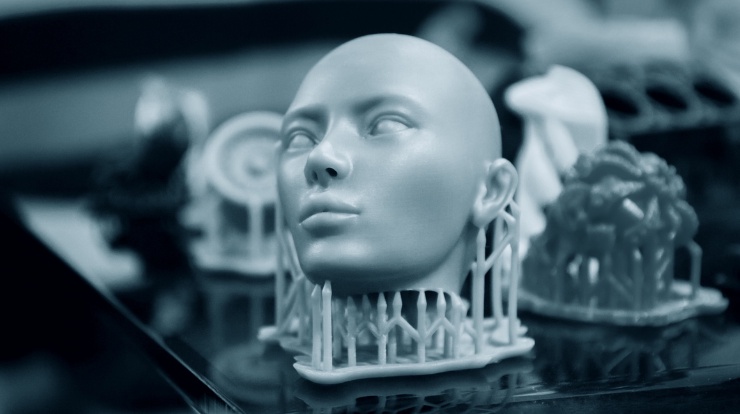Creating a 3D model that is error-free and free from geometry issues is a critical step in the 3D printing process. These issues can lead to failed prints, wasted materials, and frustration. In this comprehensive guide, we will explore various techniques and best practices to ensure that your 3D model is printable without errors or geometry issues.
1. Start with a Solid Foundation
Creating a 3D model that is printable begins with a solid foundation. Whether you're designing from scratch or modifying an existing model, it's essential to ensure that your base geometry is sound. Here are some fundamental considerations:
- Watertight Mesh: Ensure that the 3D model's mesh is watertight, meaning it is a closed, manifold structure with no holes or gaps. Holes in the mesh can lead to problems during slicing and printing.
- Properly Connected Edges: Check that edges and vertices are correctly connected to form closed loops. Open edges or non-manifold geometry can result in printing errors.
- Orientation and Scaling: Pay attention to the orientation and scaling of your model. Make sure it is correctly sized for your 3D printer's build volume and that it is oriented to print without excessive supports.
2. Use Reliable 3D Modeling Software
Choosing the right 3D modeling software can significantly impact your ability to create printable models. Established and reputable software packages often include tools and features that help identify and rectify geometry issues. Consider using software such as Autodesk Fusion 360, Blender, SolidWorks, or Tinkercad, depending on your skill level and project requirements.
3. Check and Repair Tools
Most 3D modeling software includes built-in tools to check and repair common geometry issues. These tools can automatically identify and fix problems, making it easier to create printable models. Here's how to use them:
- Check for Errors: Run the "Check for Errors" or "Check Geometry" tool in your modeling software. This will identify issues like non-manifold geometry, open edges, or inverted faces.
- Repair Tools: Utilize the software's repair tools to automatically fix identified issues. This can save you time and ensure that your model is printable.
4.. Manually Inspect Your Model
While automated tools are valuable, it's essential to manually inspect your model as well. Zoom in on different sections of the model, rotate it, and look for any anomalies or irregularities. Pay attention to the following:
- Overlaps and Intersections: Check if any parts of your model overlap or intersect incorrectly. Such intersections can lead to printing errors.
- Thin Walls and Details: Examine thin walls and fine details to ensure they are printable. If certain features are too thin, they may not be reproducible or could be fragile in the final print.
- Sharp Corners: Sharp corners can be problematic in 3D printing. Consider adding fillets or chamfers to reduce stress concentrations.
5. Optimize for Printing Technology
Different 3D printing technologies have specific requirements and limitations. Understanding the capabilities of your chosen 3D printer is crucial for ensuring your model is printable. Consider the following:
- Minimum Feature Size: Know the minimum feature size your printer can reproduce. Adjust your model's geometry accordingly to avoid features that are too small to print accurately.
- Layer Height: Adjust the model's geometry to match your desired layer height. Some features may not align well with specific layer heights, potentially leading to issues.
- Support Structures: Identify areas of your model that may require support structures, such as overhangs or bridges. Ensure that your model's design accounts for the need for supports.
6. Export in the Correct File Format
When exporting your 3D model for printing, choose the appropriate file format. The most commonly used format for 3D printing is STL (Stereolithography). Ensure that your model is saved in STL format with the correct units (e.g., millimeters or inches) to avoid scaling issues during printing.
7. Perform Test Prints
One of the best ways to ensure that a 3D model is printable without errors or geometry issues is to perform test prints. This involves printing a scaled-down version of your model to check for any problems before committing to a full-sized print. Test prints can help you identify issues like poor surface quality, warping, or structural weaknesses.
8. Consult Online Communities and Forums
The 3D printing community is vast and supportive. When you encounter challenges with a 3D model, consider seeking advice from online forums and communities dedicated to 3D printing. Websites like Reddit's r/3Dprinting and the Ultimaker Community are excellent places to ask questions, share your models, and receive feedback from experienced users.
9. Iterate and Learn from Mistakes
Creating printable 3D models is an iterative process. Don't be discouraged by initial failures or errors. Learn from your mistakes, make adjustments to your models, and continually refine your skills. Over time, you'll become more proficient at creating models that are printable without issues.
10. Professional Services and Software
If you're working on a complex or critical project and want to ensure a high level of printability, consider using professional services or specialized software. Professional 3D printing services can review and optimize your model before printing, while software tools like Netfabb offer advanced mesh repair and analysis capabilities.
Conclusion
Creating 3D models that are printable without errors or geometry issues is a fundamental aspect of successful 3D printing. By starting with a solid foundation, using reliable modeling software, checking and repairing geometry, manually inspecting your model, optimizing for your specific 3D printing technology, and performing test prints, you can significantly improve your chances of creating error-free and printable models. Remember that 3D printing is a learning process, and with practice, you'll develop the skills needed to consistently produce high-quality prints.


No comments yet